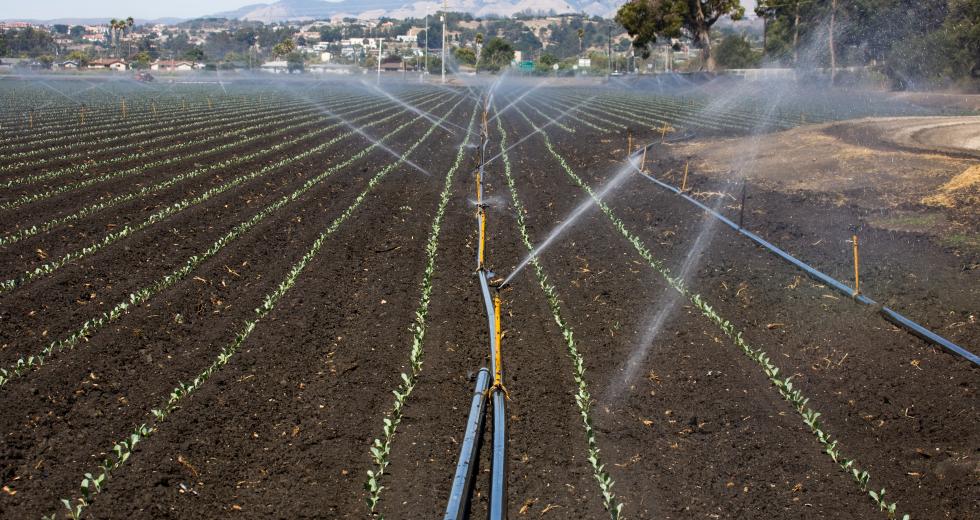*There are many serious issues facing the Capital Region. Crime, the homeless crisis, drought, climate change, devastating wildfires, inflation and rising food and gas prices are just a few. From time to time, Comstock’s will present a perspective on these issues from someone who is an expert on the subject. This issue we take a look at California’s long history of (unsucessfully) trying to grab enough water for the state.
- Judy Farah, editor
“Whiskey is for drinking and water is for fighting” is an aphorism attributed, albeit erroneously, to Mark Twain. Whatever its source, it accurately describes California’s decades-long conflicts over this existential liquid.
From 19th-century battles between farmers and hydraulic gold miners over debris polluting rivers to 21st-century political duels over spawning salmon, Californians have squabbled incessantly over how water should be captured, allocated, conveyed and priced.
The battles are growing more intense as climate change widens the gap between supply and demand. Thus, the search for a grand compromise that would satisfy the three major water interest blocs — farmers, municipal users and advocates for fish and other wildlife — has become increasingly difficult.
I first became aware of California’s incessant jousting over water in the 1960s, when I moved from Oregon to Hanford — a small city in Kings County, southwest of Fresno — to become editor of the local newspaper.
The small farmers in northern Kings County, mostly fruit growers, were enmeshed in a battle with the immense agribusiness operations, such as J.G. Boswell, founder of one of the largest farms in the U.S., in the southern part over water rights on the Kings River. I quickly learned that how much water farmers can draw from rivers and underground aquifers to irrigate their crops is the single most important factor in California’s water equation.
In a normal year — if there is such a thing now — about 200 million acre-feet of water falls on California each year. An acre-foot is enough water to cover an acre of land one foot deep and translates into 326,000 gallons or enough to supply two average households for a year.
Most of that water, falling as either rain or snow, either evaporates or sinks into the ground to fortify underground aquifers, leaving about 70 million acre-feet to feed the state’s rivers and streams. Nearly half eventually flows to the ocean, leaving about 40 million for human use. Agriculture consumes three-fourths of that water, with the remaining quarter going to local water systems.
That doesn’t count water that’s pumped from aquifers. Traditionally, wells have supplied about a third of total water consumption, although it rises during dry periods when “surface water” supplies run short. In many areas of the San Joaquin Valley land is sinking — a phenomenon called “subsidence” — because farmers have pumped too much from aquifers. A few years ago, the state Legislature took the first steps toward limiting use of underground water.
California’s current water supply system — or more accurately its dozens of federal, state and local systems — dates back to the early decades of the 20th century when the state was emerging from its frontier status into an agricultural and later industrial powerhouse. Drawing from streams and rivers and pumping from wells were no longer adequate and reliable, and politicians and business interests began pushing for larger-scale water projects.
One early example was the Imperial Valley in the southeastern corner of the state. The Imperial Irrigation District tapped the Colorado River with a dam and a canal, and its early claim meant the district eventually became entitled to as much as three-quarters of California’s share of the river’s water.
When one of the canals carrying Colorado River water into the valley collapsed in 1905, water rushed into an even lower depression in the desert, creating the Salton Sea, now the site of an environmental disaster because chemical-laden runoff from fields is its only source of replenishment.
Infamously, fast-growing Los Angeles secretly bought up land in the Owens Valley on the eastern side of the Sierra and built an aqueduct — and later another — to carry Owens River 230 miles over the mountains and into the city, enriching its backers who could then build tracts of homes, especially in the San Fernando Valley, after the project was completed in 1913.
The Owens Valley water grab was the inspiration for the movie “Chinatown,” and more than a century after the Los Angeles Aqueduct was opened, its effects on the Owens Valley and Mono Lake are still being debated. Southern California later built another aqueduct to tap a small supply of Colorado River water that the Imperial Irrigation District did not own.
The Owens Valley project was the prototype for more ambitious projects to move water from one spot in the state to another. State officials yearned to tap the mighty Sacramento River in the state’s far northern region, but lacked enough money during the Great Depression and handed the project to the federal government. The Central Valley Project, which included the massive Shasta Dam near Redding, opened up thousands of acres for agricultural development, including the rice industry north of Sacramento.
The state returned to the issue during the governorship of Pat Brown in the 1950s and 1960s. His State Water Plan includes the immense Oroville Dam on the Feather River, a major tributary to the Sacramento, and an aqueduct that pulls water out of the southern end of the Sacramento-San Joaquin Delta and moves it more than 400 miles south to Southern California.
Dozens of other dams dot the Sierra foothills southeast of Sacramento. San Francisco has its own dam on the Tuolumne River that floods the Hetch Hetchy Valley near Yosemite Valley and a pipeline into the city. The East Bay area also has a foothills dam and reservoir on the Mokelumne River.
It’s fair to say that almost every river in the state — and some streams too small to be called rivers — has been dammed for local or distant use. However, demand still outstrips supply even during wet years, resulting in a decades-long battle among competing interests over how the available supply should be divvied up and over projects to either increase supply or make it more dependable.
For example, the state water agency has been trying for nearly six decades to get a green light for a “conveyance” that would bypass the Sacramento-San Joaquin Delta and deliver Sacramento River water directly to the California Aqueduct near Tracy. Advocates promise that it would mitigate environmental damage in the Delta and make water deliveries to the south more reliable.
At first it was to be a “peripheral canal” around the Delta. Jerry Brown, during his first governorship, persuaded the legislature to approve it, only to see it shot down in a 1982 referendum with environmentalists and big San Joaquin Valley farmers forming a strange-bedfellow alliance against it.
Three decades later, Brown — once again occupying the governor’s office — promoted twin tunnels under the Delta, but also drew sharp opposition. Brown’s successor, Gavin Newsom, is now advocating a single tunnel version but the project remains iffy at best.
Water managers believe the state needs more storage to compensate for the likelihood that climate change will mean more rain and less snow, thereby diminishing the natural reservoir of the Sierra snowpack. Sites, an off-stream reservoir proposed for the west side of the Sacramento Valley, has been kicked around for decades, but is now gaining traction because of that threat.
Southern California has expanded its reservoir capacity incrementally to bank more water during wet years, and San Diego County, seeking independence from imported water, has undertaken several projects, including a desalination plant. But an identical plant proposed for Huntington Beach in Orange County has run into stiff opposition from environmental groups and could be dead.
Despite these and other efforts, California still faces a water crisis and, to be frank, a water leadership crisis. It lacks a comprehensive water plan and the civic and political will to do what earlier generations of Californians did to bolster the state’s human and economic prosperity.
In part that’s because some Californians don’t want growth of any kind, believing that it is counterproductive. But mostly it’s an unwillingness to confront the issue’s inherent conflicts. So we are basically hoping against hope that Mother Nature will provide or that a workable reallocation of water will emerge.
Reallocation — shifting more water from agriculture to maintaining river flows for fish and other animals — may already be happening. A series of federal court decisions on water flows for endangered species and decrees by the state Water Resources Control Board have trimmed water deliveries to farms in recent years and the state’s new groundwater management act is making it more difficult for farmers to drill wells.
The Public Policy Institute of California has estimated that groundwater supplies as much as 40 percent of water used by San Joaquin Valley farmers and reducing the overdraft of aquifers could take 500,000 acres out of production.
There’s an active, if not always transparent, water marketing system in California that allows those who have water to sell it. During droughts, water can sell for as much as $2,000 an acre-foot and at those prices, farmers are often willing to forego crop production. It’s no secret that investors are buying tracts of land specifically for their water rights in hopes of profiting from shortages.
Those rights, which have evolved over more than a century, may not be entirely ironclad, however. Environmental groups, citing a section of the state constitution about the primacy of public interest in water use, want the state water board to test those rights by compelling some senior rights holders to reduce their water diversions so that flows can be bolstered for wildlife habitat.
The board has already banned diversions temporarily because of drought and is on the verge of issuing new water quality standards for the San Joaquin River that would constitute permanent reductions, unless an effort to write “voluntary agreements” succeeds.
A direct assault on water rights would be the grandmother of all political and legal battles over how the state’s water is to be allocated among competing interests but may be necessary if the state is ever to come to terms with its huge gap between supply and demand.
–
Dan Walters was the longtime political columnist for the Sacramento Bee and is now a columnist for CalMatters. He has written more than 10,000 columns about California and its politics. On Twitter @DanCALmatters.
Recommended For You
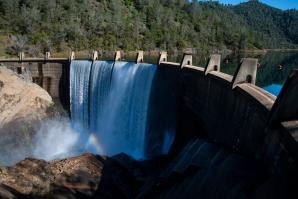
Who Will Save (Not Stop) the Rain?
California has always been celebrated for Innovation, yet we can’t budge our elected leaders to truly innovate much of anything, states Comstock’s president and publisher. In this month’s letter, she considers the complicated issue that is our state’s water dilemma.
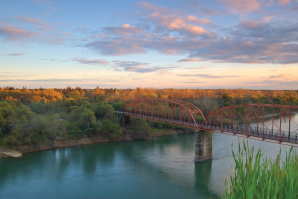
The Lasting Agreement
California’s long legacy of trying to solve its water problem
No one owns water in California, making collaboration and
negotiation between water management players crucial.

How California Is Managing Its Water Supply
Jessica Law became executive director of the Water Forum in January. Comstock’s spoke to Law about the group’s priorities as the region deals with another drought.
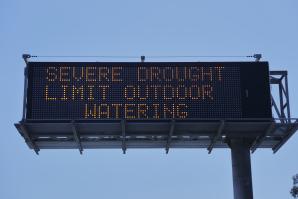
As California’s Drought Deepens, Water Use Drops Only 1.8 Percent
Officials warn that next year’s cuts in water supply could go even deeper as severe drought grips nearly 90 percent of California. Residents of the North Coast and Bay Area conserved more than Southern Californians did.
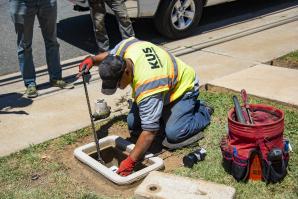
Getting Smart About Water
City of Wheatland installing over 1,200 smart water meters
Upgrades in water meters are helping to reduce water waste, but
installation of new infrastructure can be slow
and difficult to fund.



